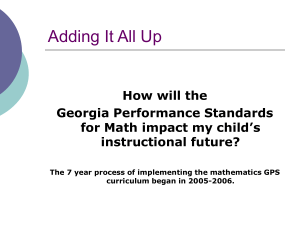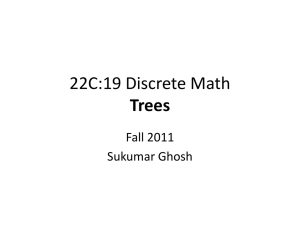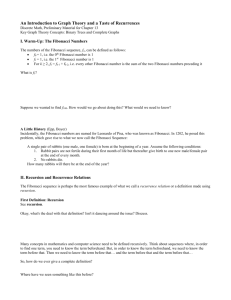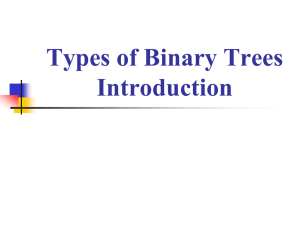Midterm 2 Exam Study Guide
advertisement
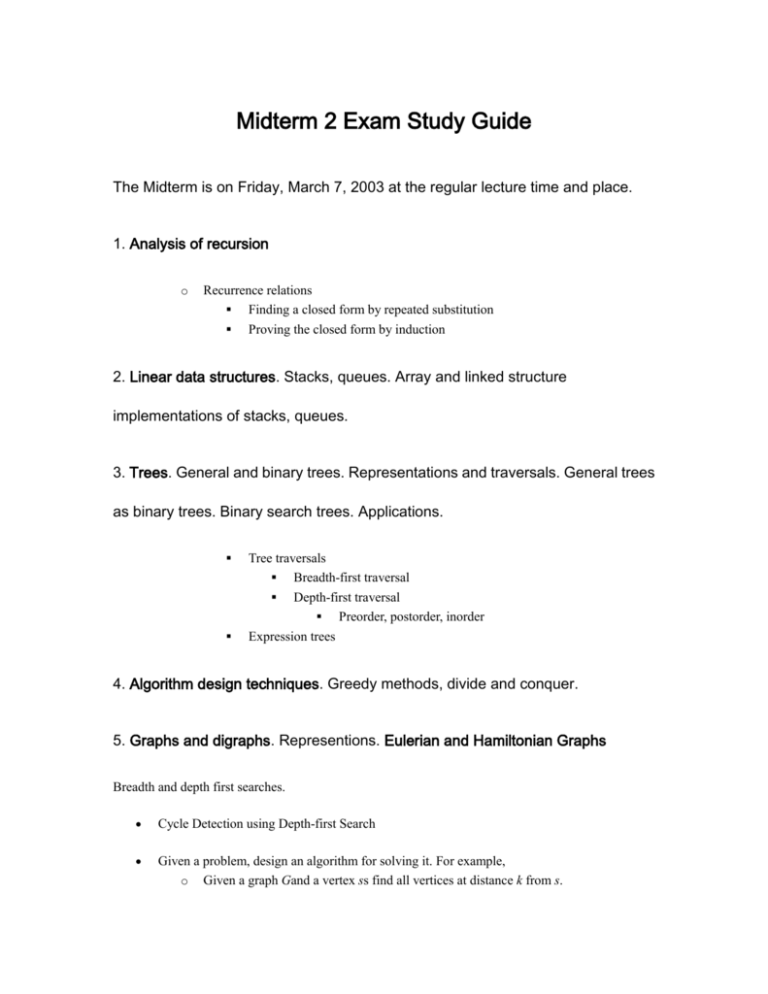
Midterm 2 Exam Study Guide
The Midterm is on Friday, March 7, 2003 at the regular lecture time and place.
1. Analysis of recursion
o
Recurrence relations
Finding a closed form by repeated substitution
Proving the closed form by induction
2. Linear data structures. Stacks, queues. Array and linked structure
implementations of stacks, queues.
3. Trees. General and binary trees. Representations and traversals. General trees
as binary trees. Binary search trees. Applications.
Tree traversals
Breadth-first traversal
Depth-first traversal
Preorder, postorder, inorder
Expression trees
4. Algorithm design techniques. Greedy methods, divide and conquer.
5. Graphs and digraphs. Representions. Eulerian and Hamiltonian Graphs
Breadth and depth first searches.
Cycle Detection using Depth-first Search
Given a problem, design an algorithm for solving it. For example,
o Given a graph Gand a vertex ss find all vertices at distance k from s.
o
Given a graph G and two vertices s and t, find a path of length at most k between s
and t.
Given an undirected graph G, decide whether G has a cycle.
Given a graph G, a set of vertices S, and a vertex t
o
o
(t not in S), find the vertex in S that is closest to t.
o
Given a graph G and a vertex s, find the vertex that is farthest from s.
Given two binary trees, decide whether they are the same.
o
Compute the time complexity of an algorithm. For example, compute the time complexity of
the above algorithms.
Binary Seach Tree ADT
Recursive Definition
Concept that this is a value-based ADT
What are the basic operations allowed (and which operations of the binary tree
are NOT allowed)?
Why did we need KeyedItem? (What possible violation of the ADT does this
solve.)
The BST Search Algorithm: be able to simulate it.
Insertion and how this uses the search algorithm.
Deletion: how it uses the search algorithm; handling the three cases.
Sample Problems.
1. Given these methods
public int math1( int n ) {
if (n <= 1) {
return 1;
} // if
else {
return ( n * 2 ) + math1( n-1 );
} // else
} // math1
public int math2( int n ) {
if (n <= 1) {
return 1;
} // if
else {
return n + math1( n ) * math2( n/2 );
} // else
} // math2
a) By showing the activation records for each call to a method, calculate the result
of running the method call: math2(4);
b) Set up a recurrence relation for the running time of the method math1 as a
function of n. Solve your recurrence relation to specify the Big-Oh bound of math1.
c) Now set up a recurrence relation for the running time of the method math2 as a
function of n. Solve your recurrence relation to specify the Big-Oh bound of math2.
Hint: When doing this, the call to math1 can be replaced by the equation that you
found when solving the recurrence relation for math1 in part b).
2. The formula for the sum of an arithmetic series is as follows:
Prove this forumla by induction on n. Treat a and b as constants.
3. Show the execution of the quick sort algorithm on the following list of numbers:
(1, 18, 21, 34, 12, 16, 74, 47, 3)
Do this by showing how the algorithm recurses through the list. Write out the list in full at each point
of the algorithm. Draw a rectangle around the numbers being considered at this point in the algorithm,
and draw an arrow pointing to the number being used as the pivot point. Use the first item in the
sublist as the pivot point at each stage of the sort.
4. Given this class definition:
public class TreeNode {
public int label;
public TreeNode left;
public TreeNode right;
}
Write a recursive program to find the maximum label of the nodes of a binary tree
(assume that the label is an integer and is called label). Assume that the nodes
are in arbitrary order (in other words, you can't just assume that left is greater, etc
-- you have to search).
5. Given this tree:
List the nodes of the tree in
a) Preorder
b) Postorder
6. Convert the expression ab + c * de - / f + from postfix to
a) infix
b) prefix
Hint: Create the expression tree from the postfix expression. This makes it much
easier to do the rest of the problem.
7. For each of these expressions:
i) (x + y) * (x + z)
ii) ((x - y) * z + (y - w)) * x
iii) ((((a * x + b) * x + c) * x + d) * x + e) * x + f
do the following:
a) Construct the expression tree
b) Find the equivalent prefix expression (do a preorder traversal)
c) Find the equivalent postfix expression (do a postorder traversal)
8. i. What is the Big-Oh bound of the selection sort? Justify your answer.
ii. What is the Big-Oh bound of the insertion sort? Justify your answer.
iii. What is the Big-Oh bound of the binary search? Justify your answer.
9.
10.
